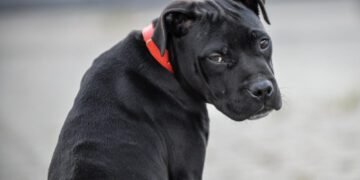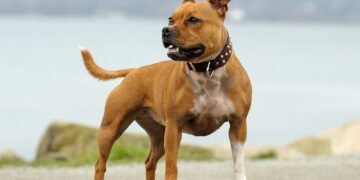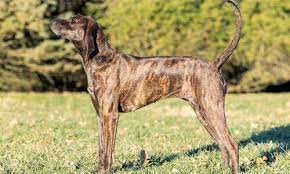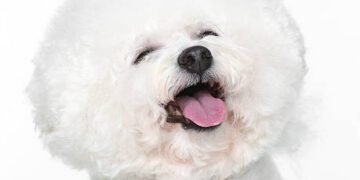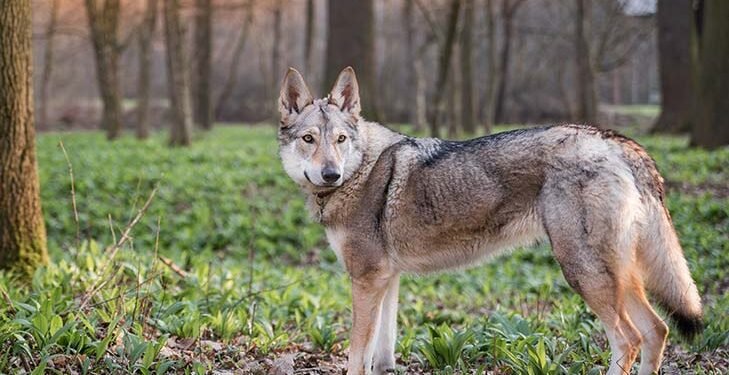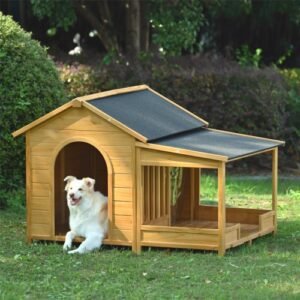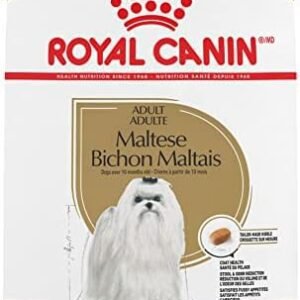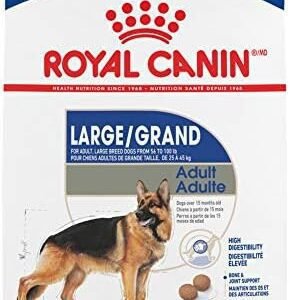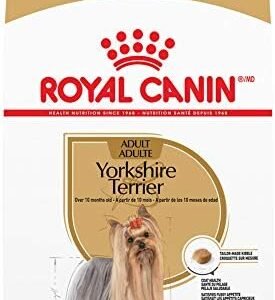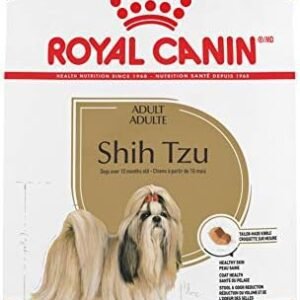The Czechoslovakian Vlcak, also known as the Czechoslovakian Wolfdog, is a captivating and unique breed that has piqued the interest of dog enthusiasts worldwide. This extraordinary breed combines the characteristics of a domesticated dog with the appearance and traits of a wolf, making it a breed like no other.
An Attention-Grabbing Fact: Imagine having a dog that not only boasts a striking resemblance to a wolf but also possesses the intelligence, loyalty, and athleticism of a working dog. The Czechoslovakian Vlcak embodies this unique combination, offering both a glimpse into the wild and a loving companion for your home.
Table of Contents
What Sets the Czechoslovakian Vlcak Apart?
The Czechoslovakian Vlcak stands out as a breed that captures the essence of the wild in a domesticated companion. Here are some of the key features that make this breed truly remarkable:
Selecting the Right Breed for Your Lifestyle
Choosing to welcome a dog into your life is a significant decision, and it’s crucial to select a breed that aligns with your lifestyle and preferences. The breed you choose will significantly impact your relationship and your dog’s overall well-being. Understanding a breed’s characteristics is paramount, as it can influence their behavior, needs, and compatibility with your household.
Czechoslovakian Vlcak at a Glance
To provide a comprehensive overview of the Czechoslovakian Vlcak breed, let’s construct a table outlining key characteristics and information.
Here’s a table summarizing the unique characteristics of the Czechoslovakian Vlcak Dog:
| Characteristic | Details |
|---|---|
| Origin | Developed in former Czechoslovakia during the 1950s as a cross between German Shepherds and Carpathian wolves. |
| Appearance | Resembles a wolf with a strong, muscular build, triangular upright ears, and amber-colored eyes. |
| Coat | Dense, straight coat with a thick undercoat; typically grey to silver-grey with a lighter mask. |
| Size | Medium to large; males weigh around 26-32 kg, females 20-26 kg; height 60-70 cm (males), 55-65 cm (females). |
| Temperament | Highly intelligent, independent, loyal, and energetic. Strong pack instincts. |
| Trainability | Quick learners but require consistent, firm, and experienced handling due to their independence. |
| Activity Level | Extremely active; needs a lot of exercise and mental stimulation. |
| Socialization | Needs early and extensive socialization; naturally wary of strangers but loyal to family. |
| Health | Generally healthy but prone to hip dysplasia and other large-breed issues. |
| Life Expectancy | Around 12-16 years. |
| Compatibility | Suited for experienced dog owners who can meet their high energy and training needs. |
| Unique Trait | Strong bond with their owner; often display wolf-like behaviors such as howling. |
This comprehensive table provides essential information about the Czechoslovakian Vlcak breed. While specific data, such as height, weight, and life span, may not be readily available, the breed’s unique characteristics, temperament, exercise needs, and coat details are well-established.
Breed History and Origin
The Czechoslovakian Vlcak, often simply referred to as the Vlcak, boasts a captivating history that combines the essence of wild wolves with the loyalty and companionship of domesticated dogs. To truly appreciate this exceptional breed, let’s delve into their intriguing history and origin.
Exploring Their Roots
A Crossbreed Like No Other
The story of the Czechoslovakian Vlcak begins in the mid-20th century, in what is now Slovakia and the Czech Republic. This unique breed was intentionally created through a rather unusual and purposeful crossbreeding effort. In the 1950s, the goal was to combine the traits of German Shepherds, known for their intelligence and working abilities, with Carpathian wolves, renowned for their resilience and adaptability to harsh environments.
This crossbreeding endeavor aimed to produce a breed that could excel as a working dog, especially in military and search-and-rescue operations. The German Shepherd was chosen for its well-documented qualities, while Carpathian wolves represented the untamed spirit and physical attributes desired.
The Alsatian Connection
Before becoming the distinct breed we know today, these wolf-dog hybrids were referred to as “Wolfdogs.” Initially, the breed was developed in Czechoslovakia (hence the name) and was known as “Československý vlčák.” The English-speaking world sometimes referred to them as “Alsatian Shepalutes” because of their resemblance to Alsatian or German Shepherds. This connection highlighted their unique blend of wolf-like features and domestic dog traits.
The breeding program continued carefully, with the intention of maintaining the wolf’s appearance while fostering the intelligence and trainability of the German Shepherd. This required a keen understanding of genetics and selective breeding practices.
Notable Traits
The Wolf-Like Appearance
One of the most striking characteristics of the Czechoslovakian Vlcak is its wolf-like appearance. This breed closely resembles its wild ancestors, with features such as pointed ears, a bushy tail, and a strong, lean body. Their dense double coat adds to the resemblance, and they often have a mask-like pattern on their faces. This distinctive appearance sets them apart from most other dog breeds.
Intelligence and Trainability
These wolf-dog hybrids inherit the remarkable intelligence of the German Shepherd. They are quick learners and highly trainable, making them excellent working dogs. Their ability to understand and respond to commands is a testament to their lineage’s strong focus on utility and cooperation.
Resilience and Adaptability
With their wolf ancestry, the Czechoslovakian Vlcak exhibits remarkable resilience and adaptability. They can thrive in various environments and weather conditions. Their well-insulated double coat provides protection against the elements, making them suitable for cold climates.
Relevance of Origin
Understanding the origin of the Czechoslovakian Vlcak is essential in comprehending the breed’s characteristics and behaviors. Their history as a working and search-and-rescue dog continues to influence their temperament and energy levels today. While they have evolved from their original roles, the breed’s loyalty, intelligence, and protective instincts remain intact, making them outstanding companions and guardians.
Understanding the Czechoslovakian Vlcak Breed’s Traits
:strip_icc()/GettyImages-175754051-2ff33f2d43d6449faa5c382d599297e3.jpg)
To truly appreciate the Czechoslovakian Vlcak breed, it’s essential to understand their distinctive physical characteristics, temperament, and specific needs. In this section, we will delve into these aspects, shedding light on what makes this breed so fascinating and unique.
Physical Characteristics
The Czechoslovakian Vlcak is a breed that commands attention with its striking physical attributes. Here’s a detailed overview of their appearance:
Size
- Height: While the exact height can vary, the Czechoslovakian Vlcak typically stands between 24 to 26 inches (60 to 65 centimeters) at the shoulder.
- Weight: Their weight generally falls within the range of 44 to 57 pounds (20 to 26 kilograms).
Coat Type and Color
- Coat Type: This breed has a dense double coat that provides protection against varying weather conditions. The undercoat is fine and insulating, while the topcoat is straight and harsh. Their coat is low-maintenance and relatively resistant to heavy shedding.
- Color: Czechoslovakian Vlcaks can have coats in various colors, with the most common being shades of yellow-gray and gray. A distinct feature is the presence of a mask-like pattern on their faces.
Distinguishing Features
- Wolf-Like Appearance: The Czechoslovakian Vlcak closely resembles a wolf, with pointed ears, a bushy tail, and a lean, muscular body. This wolf-like appearance often draws attention and fascination.
Temperament Overview
Understanding the temperament of the Czechoslovakian Vlcak is crucial, especially if you’re considering them as family pets. Here’s an overview of their temperament and behavior:
- Family-Friendly: Czechoslovakian Vlcaks can be excellent family pets when raised with children. They are loyal and protective, making them suitable for families looking for a companion and guardian in one
- Compatibility with Other Pets: When properly socialized, Czechoslovakian Vlcaks can coexist with other pets. However, their strong prey drive mightmake them inclined to chase smaller animals.
- Loyal and Protective: These dogs form strong bonds with their families and are fiercely protective. This loyalty makes them wonderful companions and dependable guard dogs
- Alertness: The Czechoslovakian Vlcak is known for its alert nature. They make excellent watchdogs, as they are quick to detect any unusual activity or potential threats.
Environment Needs
To ensure that your Czechoslovakian Vlcak thrives in your home environment, consider the following factors:
- Space Requirements: This breed benefits from having ample space to move around. While they can adapt to apartment living if provided with regular exercise, having a yard or open space is ideal.
- Temperature Tolerance: Thanks to their thick double coat, Czechoslovakian Vlcaks are well-suited for colder climates. However, they can adapt to warmer environments if provided with shade and hydration
Common Behavioral Traits
Czechoslovakian Vlcaks exhibit several behavioral traits that are characteristic of the breed. Here are some insights:
- Intelligence: These dogs are highly intelligent and quick learners. They enjoy mental challenges and benefit from obedience training and interactive toys.
- Exercise Needs: The Czechoslovakian Vlcak is a highly active breed that requires daily exercise. Activities like running, agility, and tracking are excellent choices to keep them physically and mentally engaged.
- Loyalty and Protective Instincts: Their loyalty to their family is unparalleled, and they are protective by nature. Early socialization and training are essential to ensure their protective instincts are well-managed.
- Independent Thinking: This breed can exhibit independent thinking and problem-solving abilities. It’s important for owners to establish themselves as strong leaders through consistent training and positive reinforcement.
Popularity and Recognition
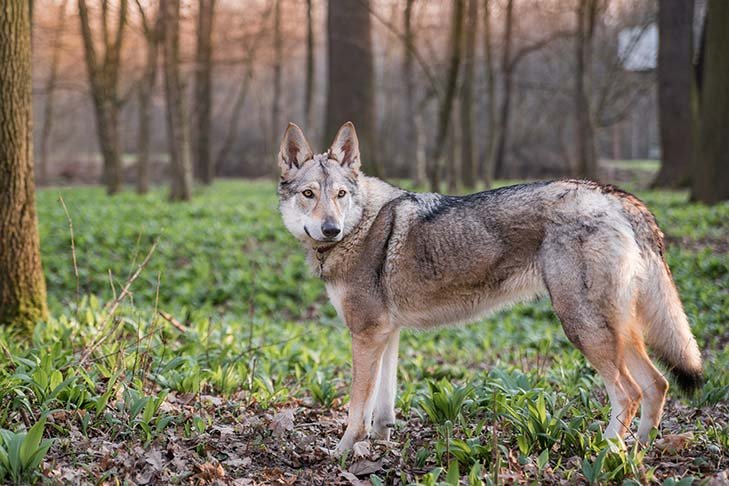
Understanding the popularity and recognition of the Czechoslovakian Vlcak is essential to gain insight into the breed’s current status in the canine world. In this section, we will explore the breed’s popularity, recognition by kennel clubs and breed organizations, and any notable breed varieties.
Current Popularity
The Czechoslovakian Vlcak, often referred to as the Czechoslovakian Wolfdog, is a breed with a dedicated and passionate following. While they may not be as ubiquitous as some more common dog breeds, they have garnered attention from dog enthusiasts, particularly those who appreciate their unique combination of wolf-like appearance and domesticated dog traits.
Trends in Ownership
In recent years, there has been a growing interest in owning Czechoslovakian Vlcaks. This surge in popularity can be attributed to several factors:
- Aesthetically Unique: The breed’s striking resemblance to wolves makes them visually captivating. Many individuals are drawn to the allure of owning a dog with such a distinctive appearance.
- Working Dog Capabilities: The intelligence, trainability, and athleticism of the Czechoslovakian Vlcak make them appealing to dog owners interested in dog sports, such as agility, obedience, and tracking.
- Loyal Companionship: Their strong loyalty and protective instincts make them wonderful companions and guard dogs, which is attractive to families and individuals seeking both affection and security.
It’s important to note that while the Czechoslovakian Vlcak’s popularity has been on the rise, they remain a breed suited to experienced owners who understand their unique needs and characteristics. As with any breed, responsible ownership is crucial to ensure their well-being.
Breed Recognition
The Czechoslovakian Vlcak has gained recognition and acceptance from several prominent kennel clubs and breed organizations. This recognition solidifies their status as a distinct and standardized breed. Key organizations that have acknowledged the Czechoslovakian Vlcak include:
Fédération Cynologique Internationale (FCI)
The FCI, or the World Canine Organization, has recognized the Czechoslovakian Vlcak as a breed. The FCI is one of the largest international canine organizations and provides breed standards that are followed by kennel clubs in various countries.
United Kennel Club (UKC)
The United Kennel Club, based in the United States, has also recognized the Czechoslovakian Vlcak as a breed. This recognition allows owners to participate in UKC events and shows, contributing to the breed’s visibility.
American Kennel Club (AKC)
As of my last knowledge update in January 2022, the American Kennel Club has not fully recognized the Czechoslovakian Vlcak as a breed eligible for full AKC registration. However, they have been allowed to participate in certain AKC events like agility trials.
Notable Breed Varieties
The Czechoslovakian Vlcak is a relatively standardized breed with one main variety. However, variations can exist within the breed, primarily due to factors like geographical location and breeding practices. While not distinctly separate “varieties” like those seen in breeds like Bulldogs, it’s worth mentioning some of the subtle differences that can be found in Czechoslovakian Vlcaks:
European Czechoslovakian Vlcak
The European variety is considered the standard type and closely adheres to the FCI breed standard. This variety is often used in breeding programs to maintain the breed’s integrity and characteristics.
North American Czechoslovakian Vlcak
Czechoslovakian Vlcaks in North America might exhibit some differences in appearance and temperament compared to their European counterparts. These variations can be attributed to factors like regional breeding practices and local preferences.
It’s essential for prospective Czechoslovakian Vlcak owners to research and choose a breeder carefully, regardless of the variety. Responsible breeding practices are critical to ensuring the health and well-being of the breed.
Health Considerations and Care
The health and well-being of your Czechoslovakian Vlcak are of paramount importance. Like all breeds, they can be prone to specific health issues that require attention and regular veterinary check-ups. In this section, we’ll discuss common health issues that the breed may be prone to, the average lifespan of Czechoslovakian Vlcaks, and tips for promoting a longer and healthier life for your canine companion.
Common Health Issues
While the Czechoslovakian Vlcak is generally a robust and healthy breed, like all dogs, they can be susceptible to certain health problems. Responsible breeders work to minimize the risk of these issues through careful breeding practices, but it’s essential for owners to be aware of potential health concerns. Some of the common health issues associated with Czechoslovakian Vlcaks include:
| Health Issue | Description | Management |
|---|---|---|
| Hip Dysplasia | Genetic condition affecting hip joints, leading to arthritis and lameness. | Regular veterinary check-ups and X-rays for early detection. |
| Degenerative Myelopathy | Progressive spinal cord disease causing hind limb weakness and paralysis. | Early diagnosis and supportive care to manage the condition. |
| Gastric Torsion (Bloat) | Life-threatening stomach twisting, cutting off blood flow. | Immediate emergency treatment required; preventive measures include slow-feeding bowls. |
| Eye Problems | Issues like cataracts and progressive retinal atrophy (PRA) can affect vision. | Regular eye check-ups and monitoring by a veterinary ophthalmologist. |
| Autoimmune Disorders | Conditions where the immune system attacks the body, affecting overall health. | Early detection, proper management, and possibly medication to control symptoms. |
| Elbow Dysplasia | Similar to hip dysplasia, causing lameness and discomfort in the front limbs. | Regular check-ups and appropriate medical or surgical interventions. |
| Panosteitis | Affects long bones in growing puppies, causing lameness and pain. | Self-limiting, but requires rest, pain management, and monitoring during growth spurts. |
It’s important to note that not all Czechoslovakian Vlcaks will experience these health issues, and many can live long and healthy lives without major health concerns. Regular visits to the veterinarian and responsible breeding practices can help reduce the risk of these problems.
Lifespan and Longevity
The average lifespan of a Czechoslovakian Vlcak typically ranges from 12 to 16 years, with proper care and attention to their health needs. To promote a longer and healthier life for your Vlcak, consider the following tips:
- Regular Veterinary Check-Ups: Schedule regular check-ups with your veterinarian to catch any health issues early and ensure your dog is up to date on vaccinations and preventive care.
- Balanced Diet: Provide a well-balanced diet that meets your Czechoslovakian Vlcak’s nutritional needs. Consult with your veterinarian to choose the right food and feeding schedule.
- Exercise and Mental Stimulation: This breed requires regular exercise and mental stimulation to stay healthy and happy. Daily walks, playtime, and engaging activities are essential.
- Socialization and Training: Proper socialization and training are crucial to ensure your Vlcak is well-adjusted and well-behaved. Early training helps manage their protective instincts.
- Grooming: Maintain their dense double coat with regular brushing to minimize shedding and keep their skin healthy. Check their ears, trim their nails, and brush their teeth as needed.
- Dental Care: Dental health is often overlooked but is vital for overall well-being. Brush your Vlcak’s teeth regularly and provide dental chews or toys.
- Preventative Care: Discuss preventative measures with your veterinarian, including parasite control (fleas, ticks, heartworm), spaying/neutering, and vaccinations.
- Mental and Emotional Well-Being: Ensure your Vlcak receives ample attention and companionship. These loyal dogs thrive on being with their families.
- Safe Environment: Keep your home and yard safe for your Vlcak. This includes securing fences, removing hazards, and providing shade in hot weather.
- Health Insurance: Consider obtaining pet health insurance to help cover unexpected medical expenses.
By following these tips and providing your Czechoslovakian Vlcak with the care and attention they need, you can contribute to a longer and healthier life for your beloved companion.
Training and Socialization
Training and socialization are critical aspects of raising a well-behaved and balanced Czechoslovakian Vlcak. This breed’s intelligence and protective instincts can be channeled effectively through proper training. In this section, we will explore essential training requirements, the importance of socialization, opportunities for advanced training, and how to address common training challenges.
Essential Training
Obedience Training
Obedience training is fundamental for Czechoslovakian Vlcaks. These intelligent dogs respond well to commands, but they also have an independent streak. Consistent and positive reinforcement-based training methods work best. Here are some key obedience training tips:
- Start Early: Begin training when your Vlcak is still a puppy. Early training helps establish good behaviors and a strong bond.
- Basic Commands: Teach basic commands like sit, stay, down, come, and heel. These commands provide a foundation for more advanced training.
- Positive Reinforcement: Use positive reinforcement techniques such as treats, praise, and play to reward good behavior. Avoid harsh methods, as they can lead to resistance.
- Consistency: Be consistent with commands and expectations. Vlcaks respond well to routines and clear boundaries.
Crate Training
Crate training is valuable for housebreaking and providing your Vlcak with a safe space. Here’s how to crate train your Czechoslovakian Vlcak:
- Positive Association: Make the crate a positive place by offering treats and praise when your dog enters it willingly.
- Gradual Introduction: Introduce the crate gradually, allowing your dog to spend short periods inside and gradually extending the time.
- Potty Training: Use the crate to aid in potty training. Dogs generally avoid soiling their living space.
- Safety and Security: The crate can be a safe haven for your Vlcak. Never use it as a form of punishment.
Housebreaking
Housebreaking, or housetraining, is an essential part of raising a well-behaved dog. Here’s how to housetrain your Czechoslovakian Vlcak:
- Establish a Routine: Set a regular schedule for feeding, potty breaks, and walks.
- Closely Supervise: Keep a close eye on your puppy and take them outside immediately after eating, waking up, or playing.
- Reward and Praise: Praise and reward your dog when they eliminate outside. Positive reinforcement is key to housetraining success.
Socialization Needs
Socialization is the process of exposing your Czechoslovakian Vlcak to various people, animals, environments, and situations. Proper socialization is crucial to prevent fear or aggression issues and ensure that your dog is well-adjusted. Here’s how to socialize your Vlcak effectively:
- Early Start: Begin socializing your puppy as early as possible, ideally between 3 and 14 weeks of age. This is a critical developmental period.
- Exposure: Gradually expose your Vlcak to different people, including children, as well as other dogs, pets, and various environments like parks, markets, and public places.
- Positive Experiences: Ensure that your dog’s early experiences are positive. Use treats and praise to create positive associations.
- Consistency: Maintain a consistent and positive approach to socialization throughout your dog’s life.
Advanced Training
Czechoslovakian Vlcaks excel in advanced training and various dog sports. Consider these opportunities to challenge your dog mentally and physically:
Agility Training
Agility training is an excellent way to keep your Vlcak physically fit and mentally stimulated. This sport involves navigating a course with various obstacles, including jumps, tunnels, and weave poles. It’s an ideal activity for this athletic breed.
Working Roles
Given their origins as working and search-and-rescue dogs, Czechoslovakian Vlcaks can thrive in various working roles, such as search and rescue, tracking, and obedience trials. These activities allow them to use their intelligence and physical abilities to the fullest.
Common Training Challenges
Training a Czechoslovakian Vlcak can be a rewarding but challenging experience due to their intelligence and protective instincts. Here are some common training challenges and how to address them:
- Independence: Vlcaks can be independent thinkers. Maintain consistency in your training approach, and establish yourself as a strong, confident leader.
- Protectiveness: While their protective nature is an asset, it can lead to over-protectiveness or aggression if not properly managed. Early socialization and training are essential to strike the right balance
- High Energy: These dogs have high energy levels. Ensure they receive sufficient exercise to prevent restlessness and destructive behavior.
- Selective Hearing: Vlcaks may occasionally seem to have “selective hearing.” Stay patient and use positive reinforcement to motivate them.
- Dominance: Like many working breeds, they may test boundaries. Establish yourself as the pack leader and use positive reinforcement to maintain control
Nutrition and Feeding Guidelines
Proper nutrition is essential for the health and well-being of your Czechoslovakian Vlcak. This section will provide specific dietary recommendations based on the breed’s size, age, and activity level, along with information on any dietary restrictions or allergies commonly associated with the breed. We’ll also include guidance on feeding schedules and portion control.
Dietary Recommendations
Czechoslovakian Vlcaks, like all dogs, have specific dietary needs that should be met for optimal health. Here are some dietary recommendations for this breed:
- High-Quality Dog Food: Choose a high-quality commercial dog food that is appropriate for your Vlcak’s life stage (puppy, adult, senior). Look for brands that list a protein source as the first ingredient and avoid foods with excessive fillers.
- Protein: Czechoslovakian Vlcaks benefit from a diet rich in quality animal protein. Look for foods that contain meat as the primary protein source.
- Moderate Fat: Ensure that the dog food contains a moderate amount of fat, as these dogs are active and require energy.
- Avoid Fillers: Minimize foods that contain excessive fillers like corn, wheat, and soy, which offer little nutritional value.
- Portion Control: Carefully measure your Vlcak’s food to prevent overfeeding. The amount of food your dog needs depends on factors such as age, activity level, and metabolism.
- Fresh Water: Provide access to fresh, clean water at all times. Hydration is crucial for their overall health.
Dietary Restrictions and Allergies
Czechoslovakian Vlcaks do not have specific dietary restrictions or allergies that are unique to the breed. However, like any dog, they can develop food sensitivities or allergies. If you notice signs of food allergies such as itching, digestive issues, or skin problems, consult with your veterinarian to identify the specific allergens and adjust your dog’s diet accordingly.
Feeding Schedule
Establishing a consistent feeding schedule is essential to maintain your Vlcak’s health and to assist with housetraining. Here’s a recommended feeding schedule for puppies and adult Czechoslovakian Vlcaks:
Puppies (up to 6 months):
- 3-4 meals per day. Divide their daily portion into multiple small meals.
- Puppies have small stomachs and high energy levels, so frequent feeding is essential.
Adults (6 months and older):
- 2 meals per day. Most adult Vlcaks do well with two meals daily.
- Feeding twice a day can help regulate energy levels and prevent overeating.
Seniors (7 years and older):
- 2 meals per day, with adjusted portion sizes.
- Senior dogs may require a diet tailored to their specific needs, including joint support and fewer calories.
Portion Control
The portion size for your Czechoslovakian Vlcak depends on various factors, including age, weight, activity level, and the specific dog food you’re using. Always follow the feeding guidelines provided by the dog food manufacturer, which are typically based on your dog’s weight and age.
To monitor your dog’s weight and adjust portions as needed, consider the following:
- Regular Weighing: Weigh your dog regularly, especially during growth phases. Adjust their food portions based on their weight and any guidance from your veterinarian.
- Body Condition: Assess your dog’s body condition by looking at their waistline and feeling for their ribs. You should be able to feel the ribs without them being visible. If your dog is underweight, increase the portion size, and if they are overweight, reduce it.
- Consult Your Veterinarian: Your veterinarian can provide guidance on portion control based on your Vlcak’s specific needs.
- Treats: Be mindful of treat portions, as they can contribute to excess calorie intake. Use treats sparingly during training and choose healthy options.
- Special Dietary Needs: If your Vlcak has specific dietary requirements due to health issues or allergies, work with your veterinarian to create an appropriate feeding plan.
Remember that individual dogs may have varying metabolic rates and activity levels, so it’s crucial to tailor their diet to their unique needs. Regular veterinary check-ups can help ensure your Czechoslovakian Vlcak maintains a healthy weight and receives the necessary nutrients for their well-being.
By following these dietary recommendations and establishing a consistent feeding schedule, you can help your Czechoslovakian Vlcak maintain optimal health and enjoy a long, active, and happy life.
Personal Stories and Testimonials
One of the best ways to gain insights into the Czechoslovakian Vlcak breed is through real-life stories and testimonials from owners. Hearing about their experiences, challenges, and joys can provide valuable perspectives on what it’s like to share your life with a Vlcak.
Personal Stories
Story 1: The Adventure Companion
“My Czechoslovakian Vlcak, Luna, has been my ultimate adventure companion. We’ve hiked through mountains, explored dense forests, and even tried dog agility. Her energy and enthusiasm are contagious. She’s incredibly loyal and protective, making me feel safe on our outdoor escapades. However, her independent nature keeps me on my toes during training. But with patience and positive reinforcement, she’s grown into an obedient and loving companion.“
Story 2: A Family Guardian
“We got our Vlcak, Thor, when he was just a pup. He quickly became a beloved member of our family. Thor’s loyalty and protective instincts are unmatched. He’s gentle with our children and has a soft spot for our other pets. We’ve worked on his socialization since day one, and he’s become a well-rounded and confident dog. Thor is a guardian and a friend, and we can’t imagine our lives without him.“
Testimonial 1: A Rewarding Challenge
Testimonials
“Owning a Czechoslovakian Vlcak has been a rewarding challenge. Training and socialization took time and effort, but the results have been remarkable. My Vlcak, Max, is not only an obedient and loyal companion but also an agility champion. His athleticism and intelligence constantly amaze me. This breed is not for everyone, but for those willing to put in the work, the rewards are endless.”
Testimonial 2: A Loving Protector
“Our Czechoslovakian Vlcak, Bella, is our loving protector. Her presence alone deters any potential threats, and her loyalty to our family is unwavering. We started socializing her early, and she’s become a well-mannered and confident dog. Bella’s unique wolf-like appearance always draws attention, and we’re proud to show off her beauty and intelligence.”
These personal stories and testimonials illustrate the unique experiences and deep connections that owners have with their Czechoslovakian Vlcaks. While they come with their challenges, the breed’s loyalty, intelligence, and protective instincts make them cherished companions for those who appreciate their exceptional qualities.
Cost of Owning a Czechoslovakian Vlcak
Owning a Czechoslovakian Vlcak is a rewarding experience, but it comes with associated costs. From initial expenses to ongoing care, budgeting for your Vlcak’s needs is crucial to ensure their well-being. Let’s break down the expenses associated with dog ownership.
Upfront Costs
- Acquisition: The cost of acquiring a Czechoslovakian Vlcak puppy from a reputable breeder can vary but is typically in the range of $1,000 to $2,500, depending on the breeder’s reputation, the puppy’s pedigree, and the region.
- Spaying/Neutering: Unless your puppy is already spayed or neutered, you should budget for this procedure, which can range from $150 to $300 or more.
- Initial Vaccinations and Microchipping: Your puppy will need vaccinations, including core vaccines, which can cost $75 to $100 or more. Microchipping typically costs $50 to $75.
- Supplies: You’ll need to invest in supplies such as a crate, leash, collar, food and water bowls, grooming tools, and toys. These costs can vary but may add up to a few hundred dollars.
- Training and Socialization: Enrolling your Vlcak in puppy training classes and socialization programs is essential. Prices can range from $100 to $300 or more, depending on the location and the type of training
Ongoing Expenses
- Food: High-quality dog food is essential for your Vlcak’s health. Monthly food costs can range from $50 to $100 or more, depending on the brand and the dog’s size.
- Veterinary Care: Regular check-ups, vaccinations, and preventive care are ongoing expenses. Budget for annual vet visits, which can cost around $100 to $200. Additional costs may arise for unforeseen health issues.
- Grooming: While the Vlcak has a low-maintenance coat, occasional grooming may be needed. This could cost around $50 to $100 per session.
- Training and Activities: Ongoing training classes or participation in dog sports or activities can range from $100 to $300 or more per year.
- Pet Insurance: Consider pet insurance to help cover unexpected medical expenses. Monthly premiums typically range from $20 to $60, depending on coverage.
- Toys and Supplies: Budget for the replacement of toys, bedding, and other supplies as needed, which can add up to $50 to $100 per year or more.
- Licenses and Registration: Depending on your location, you may need to pay for dog licensing and registration fees, which vary widely.
- Miscellaneous Costs: Be prepared for miscellaneous expenses, including treats, grooming products, and unexpected items like replacement collars or leashes.
- Boarding or Pet Sitting: If you need to leave your Vlcak for an extended period, boarding or pet sitting costs can vary significantly.
Remember that these are general estimates, and actual costs may vary based on your location, your dog’s specific needs, and the choices you make regarding food, veterinary care, and other services. Budgeting for your Czechoslovakian Vlcak’s needs is essential to provide them with a happy and healthy life.
Exercise Requirements
:strip_icc()/GettyImages-484959730-8fdd5aa5b59f43319c204ae1bf974dd5.jpg)
Czechoslovakian Vlcaks are known for their high energy levels and athleticism. Regular exercise is not just a preference for this breed; it’s a necessity for their physical and mental well-being. In this section, we’ll explore their daily exercise needs, the importance of mental stimulation, and activities and toys that can help keep your Czechoslovakian Vlcak happy and healthy.
Daily Exercise
Czechoslovakian Vlcaks require a substantial amount of daily exercise to stay physically fit and mentally stimulated. Here are the key aspects of their exercise needs:
- Duration: Aim for at least 60-90 minutes of exercise per day. These dogs have high energy levels and need consistent physical activity.
- Intensity: Vlcaks enjoy activities that challenge their physical abilities. Activities like running, agility, and strenuous play are ideal.
- Variety: Keep exercise varied to prevent boredom. In addition to walks, engage in activities like hiking, fetch, and interactive games.
- Off-Leash Play: Allowing your Vlcak to run off-leash in a secure area is beneficial. They love the freedom and opportunity to expend energy.
- Mental Stimulation: In addition to physical exercise, provide mental stimulation through training and interactive toys.
Mental Stimulation
Czechoslovakian Vlcaks are highly intelligent dogs, and mental stimulation is as crucial as physical exercise. Here’s why mental stimulation matters:
- Prevents Boredom: Boredom can lead to destructive behaviors in Vlcaks. Mental challenges keep them engaged and content.
- Enhances Training: Mental stimulation through obedience training and problem-solving activities reinforces their training and bond with you.
- Promotes Well-Being: Mental stimulation contributes to a happier and healthier Vlcak. It can also prevent anxiety and restlessness.
Activities and Toys
To keep your Czechoslovakian Vlcak mentally and physically engaged, consider the following activities and toys:
- Agility Courses: Set up agility courses in your yard or find local agility classes. This breed excels in agility training.
- Fetch and Retrieval Games: Vlcaks enjoy playing fetch, and it’s an excellent way to expend their energy.
- Hiking and Trail Walks: Explore nature trails and hiking routes to provide both physical exercise and a change of scenery.
- Puzzle Toys: Interactive puzzle toys challenge your Vlcak’s problem-solving abilities and provide mental stimulation.
- Obedience Training: Regular training sessions not only reinforce good behavior but also engage their intelligence
- Hide-and-Seek Games: Hide treats or toys around the house or yard for your Vlcak to find.
- Tug-of-War: Play tug-of-war with a strong, durable rope toy to satisfy their natural instincts.
- Scent Work: This breed’s keen sense of smell makes scent work or tracking activities highly engaging.
Remember that your Czechoslovakian Vlcak’s exercise and mental stimulation needs may vary based on their age and individual energy levels. It’s essential to tailor their activities to their capabilities and preferences.
Choosing and Adopting a Czechoslovakian Vlcak Dog Breed
Choosing to adopt a Czechoslovakian Vlcak is a significant decision that can bring joy, companionship, and a sense of fulfillment to your life. This section provides guidance on the reasons for adopting this unique breed, researching and preparing for adoption, understanding the adoption process, and ethical considerations regarding breeding.
Reasons for Adoption
Adopting a Czechoslovakian Vlcak can be a rewarding experience for several reasons:
- Giving a Second Chance: By adopting a Czechoslovakian Vlcak from a rescue or shelter, you are giving a dog a second chance at a happy and loving life. Many of these dogs have faced hardships and deserve a caring home.
- Unique and Fascinating Breed: The Czechoslovakian Vlcak is a unique breed, with a striking wolf-like appearance and a blend of domesticated dog traits. Adopting one allows you to experience the companionship of a distinctive breed.
- Loyalty and Protection: Czechoslovakian Vlcaks are known for their loyalty and protective instincts. They can serve as both loving companions and watchful guardians, enhancing your sense of security.
- Saving a Life: By adopting a Czechoslovakian Vlcak, you are directly contributing to savinga life. It’s a compassionate choice that has a positive impact on the dog and the broader rescue community.
- Supporting Ethical Breeding Practices: Adoption sends a message about the importance of ethical breeding practices. It encourages responsible breeding, health screening, and genetic diversity.
Research and Preparation
Before adopting a Czechoslovakian Vlcak, thorough research and preparation are essential. Here are some key steps to consider:
- Understanding Breed-Specific Needs: Research the specific needs of the Czechoslovakian Vlcak breed. Learn about their exercise requirements, grooming needs, and socialization.
- Financial Responsibilities: Be prepared for the financial responsibilities of dog ownership, including food, veterinary care, grooming, and training expenses.
- Assessing Your Lifestyle: Evaluate your current lifestyle and daily routines. Ensure that you have the time and energy to meet the needs of an active and intelligent breed like the Czechoslovakian Vlcak.
- Home Environment: Consider your living situation. Do you have enough space for this breed? Is your yard secure, and are there any hazards that need to be addressed?
- Training and Socialization: Be ready to commit to training and socialization to ensure that your Czechoslovakian Vlcak becomes a well-adjusted and obedient companion.
- Local Resources: Research local resources, including veterinarians, trainers, and groomers who are experienced with this breed.
Adoption Process
The adoption process for a Czechoslovakian Vlcak typically involves several steps:
- Application: Start by filling out an adoption application with a reputable rescue organization. They may ask about your experience with dogs, your living situation, and your reasons for adopting.
- Interview and Home Visit: Some organizations conduct interviews or home visits to assess whether your home is suitable for the breed and to understand your commitment to responsible ownership.
- Fees: Be prepared to pay adoption fees, which often cover the cost of vaccinations, spaying/neutering, microchipping, and other initial care.
- Paperwork: Review and sign adoption paperwork, which outlines your responsibilities and the organization’s expectations for care.
- Transition Period: Allow for an adjustment period when your new Czechoslovakian Vlcak settles into your home. Be patient and provide a stable and loving environment.
Breeding and Ethical Considerations
While adoption is a wonderful choice, it’s important to recognize the importance of ethical breeding practices. If you decide to purchase a Czechoslovakian Vlcak from a breeder, consider the following ethical considerations:
- Reputable Breeders: Seek out reputable breeders who prioritize the health and well-being of the dogs. They should conduct health screenings, genetic testing, and provide proper care for their breeding dogs.
- Genetic Diversity: Responsible breeders work to maintain genetic diversity within the breed, reducing the risk of inherited health issues.
- Health Screenings: Ask about health screenings for common breed-specific health concerns, such as hip dysplasia and eye problems.
- Avoid Puppy Mills: Never purchase a dog from a puppy mill or an irresponsible breeder. These establishments prioritize profit over the well-being of the dogs.
- Adoption as an Alternative: Consider adoption as an ethical alternative to purchasing from a breeder. It allows you to provide a loving home to a dog in need.
FAQ
What is a Czechoslovakian Vlcak?
The Czechoslovakian Vlcak (or Czechoslovakian Wolfdog) is a unique dog breed developed by crossing German Shepherds with Carpathian wolves. Initially bred in the 1950s as a military and working dog, it is known for its wolf-like appearance and strong, athletic build.
How big do Czechoslovakian Vlcaks get?
Males: Typically stand 26-28 inches (65-70 cm) at the shoulder and weigh 57-65 pounds (26-29 kg).
Females: Slightly smaller, standing 24-26 inches (60-65 cm) and weighing 44-57 pounds (20-26 kg).
What is their temperament like?
Czechoslovakian Vlcaks are intelligent, loyal, and energetic. While they bond closely with their families, they can be reserved with strangers. Their wolf-like instincts make them independent and sometimes challenging to train, requiring experienced dog owners.
Are they good with children and other pets?
They can be good with children and pets when properly socialized from a young age. However, their natural prey drive and pack mentality require supervision around smaller animals and younger kids.
Do Czechoslovakian Vlcaks require a lot of exercise?
Yes, these dogs are highly active and thrive on regular physical and mental stimulation. Long walks, runs, and engaging activities are essential to keep them healthy and prevent boredom.
Are they easy to train?
Training a Czechoslovakian Vlcak can be challenging due to their intelligence and stubborn nature. Positive reinforcement and consistent training methods are key. They are not ideal for first-time dog owners.
What kind of living environment is best for them?
They prefer homes with ample space, such as a house with a large, securely fenced yard. Apartment living is not suitable for this breed unless they receive significant daily exercise.
What are common health issues in the breed?
Czechoslovakian Vlcaks are generally healthy but may be prone to:
Hip Dysplasia
Elbow Dysplasia
Degenerative Myelopathy
Regular veterinary check-ups and a balanced diet can help maintain their health.
How long do Czechoslovakian Vlcaks live?
Their average lifespan is around 12 to 16 years, making them a relatively long-lived breed.
Are they recognized by major kennel clubs?
Yes, the Czechoslovakian Vlcak is recognized by organizations like the Federation Cynologique Internationale (FCI) and the American Kennel Club (AKC) under its Foundation Stock Service (FSS).

